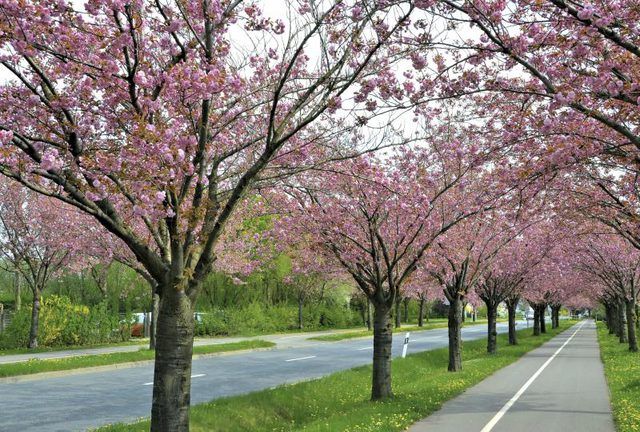Bulbs
Flower Basics
Flower Beds & Specialty Gardens
Flower Garden
Garden Furniture
Garden Gnomes
Garden Seeds
Garden Sheds
Garden Statues
Garden Tools & Supplies
Gardening Basics
Green & Organic
Groundcovers & Vines
Growing Annuals
Growing Basil
Growing Beans
Growing Berries
Growing Blueberries
Growing Cactus
Growing Corn
Growing Cotton
Growing Edibles
Growing Flowers
Growing Garlic
Growing Grapes
Growing Grass
Growing Herbs
Growing Jasmine
Growing Mint
Growing Mushrooms
Orchids
Growing Peanuts
Growing Perennials
Growing Plants
Growing Rosemary
Growing Roses
Growing Strawberries
Growing Sunflowers
Growing Thyme
Growing Tomatoes
Growing Tulips
Growing Vegetables
Herb Basics
Herb Garden
Indoor Growing
Landscaping Basics
Landscaping Patios
Landscaping Plants
Landscaping Shrubs
Landscaping Trees
Landscaping Walks & Pathways
Lawn Basics
Lawn Maintenance
Lawn Mowers
Lawn Ornaments
Lawn Planting
Lawn Tools
Outdoor Growing
Overall Landscape Planning
Pests, Weeds & Problems
Plant Basics
Rock Garden
Rose Garden
Shrubs
Soil
Specialty Gardens
Trees
Vegetable Garden
Yard Maintenance
Kwanzan Cherry Tree Problems
Kwanzan Cherry Tree Problems. Few sights can top the beauty of a Kwanzan cherry tree (Prunus serrulata "Kwanzan") when it's covered in masses of pink blossoms in spring. The tree grows in U.S. Department of Agriculture plant hardiness zones 5 through 9. The Kwanzan cherry can be susceptible to a few pests and diseases that might...

Few sights can top the beauty of a Kwanzan cherry tree (Prunus serrulata "Kwanzan") when it's covered in masses of pink blossoms in spring. The tree grows in U.S. Department of Agriculture plant hardiness zones 5 through 9. The Kwanzan cherry can be susceptible to a few pests and diseases that might jeopardize the tree's health, so diagnosing the problem early is important to keep it blooming for many years.
Bleeding From Borers
The Kwanzan cherry is susceptible to the peach tree borer, which can do serious damage, especially to a young tree. The immature larva bores through the bark and feeds on wood, weakening the tree. Telltale signs include seeping of gummy sap or "bleeding" from holes in the bark, usually no higher than 1 foot from the ground -- wood debris, called frass, can also mix into the sap or fall from the holes. Insecticidal sprays are usually ineffective because borers live inside the tree. Reducing stress by keeping the tree well watered during dry spells helps it recover from borer damage, as does feeding the tree each spring with 3 to 5 pounds of 10-6-4 fertilizer for each inch of trunk diameter.
Aphids and Mites
Several other pests can cause problems for a Kwanzan cherry tree. Soft-bodied aphids are tiny, greenish insects that feed on new growth, distorting leaves and leaving behind sticky deposits called honeydew. Spider mites are microscopic pests that cause leaves to turn yellow or develop tiny yellowish spots. Although invisible to the eye, they produce web-like coverings, especially over growing tips and young leaves. Control both pests by spraying the tree until dripping wet with insecticidal soap, diluted at a rate of 6 tablespoons per gallon of water; repeat the spray every few weeks as needed. Wear gloves and protective clothing when mixing and spraying, and follow all label cautions.
Caterpillar Tents
The Kwanzan cherry is also susceptible to tent caterpillars, small black larvae that first appear inside web-like tents, often located in branch crotches or covering clusters of leaves. When undisturbed, caterpillars eventually leave the nest and feed on leaves -- a severe infestation can defoliate a tree, although most trees can recover from a single attack and put out new leaves. The best defense against these pests is to be vigilant and remove small nests by pruning out affected branches with disinfected shears -- if a nest is large, wind the sticky web onto a stick to remove it from the tree.
Fungal Diseases
A cherry tree might develop a fungal disease, such as leaf spot, powdery mildew or root rot. These can cause blackening or spotting of leaves, fuzzy white spots on leaves or gradual dieback of twigs and branches, respectively. These diseases develop in humid, overly moist conditions and are best prevented by planting the tree in an area with good air circulation, where soil is well drained and doesn't stay soggy after a rain. To help prevent fungal problems, water the tree at the roots with a soaker hose or use drip irrigation, and avoid wetting the foliage. If you see blackened leaves or young twigs, prune these off to prevent spread of the disease, wiping your tools with rubbing alcohol between cuts.